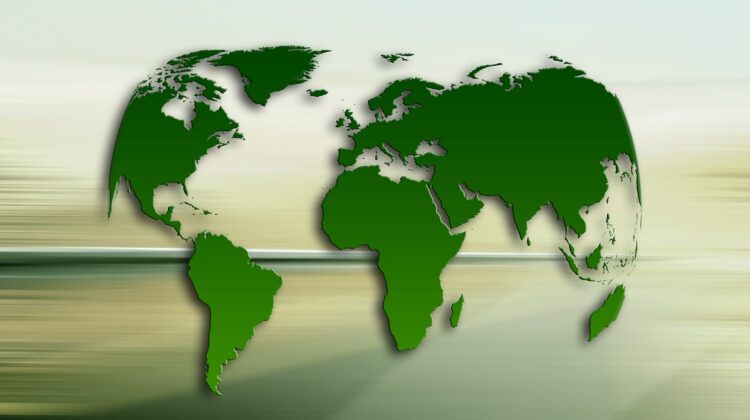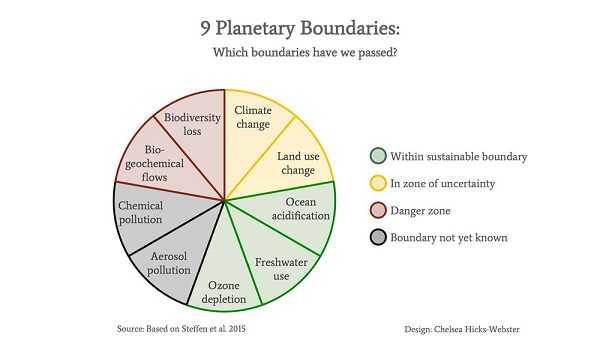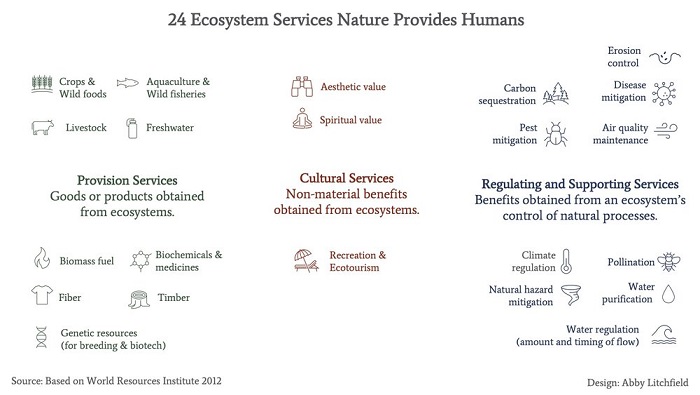
Environmental Sustainability – Meaning, Examples and Importance
Every business can take action on environmental sustainability. Learn how to make your impact on the planet more positive.
“The Basics” provides essential knowledge about core business sustainability topics.
What is Environmental Sustainability?
The concept of environmental sustainability emerged in 1987, when the World Commission on Environment and Development created the concept of “sustainable development.” That means actions that “meet the needs of present generations without compromising the needs of future generations.”
Sustainability has 3 distinct but linked elements:
Economic sustainability: Ensuring economic prosperity can be maintained over time.
Social sustainability: Ensuring all people, now and in the future, have their basic needs met.
Environmental sustainability: Ensuring non-human elements of nature, like air, water, trees, and wildlife remain healthy over time.
What is Environmental Sustainability in Business?
Businesses have a huge role to play in making the world more sustainable. (Just think – the value of Apple’s stock is higher than most countries’ GDP. That’s a lot of money and power.) We can think of the role that companies play in sustainability as “corporate sustainability.”
For corporate sustainability to be effective, we need to recognize the connections between economic, social and environmental sustainability. But, we also need to understand each of these dimensions in greater depth. So, in this article we emphasize the role of business in environmental sustainability. (You can check out our companion article on social sustainability.)
All businesses, regardless of their location or industry:
- Rely on natural resources to make products and provide services
- Produce waste, including carbon dioxide (CO2)
- Experience climate change and associated weather changes
That means all businesses can play a role in environmental sustainability by reshaping their activities to protect natural resources, reduce waste, and address threats from climate and weather.
We’re going to talk about environmental sustainability in two ways. First, what does environmental sustainability look like for the planet, or what is a healthy planet? We can use the idea of “planetary boundaries” to understand this.
Next, we’ll explain how businesses can improve their own operations. The “ecosystem services” approach gives organizations a roadmap.
Importance of Environmental Sustainability
If we cause too much damage to the environment, we may reach a point of no return.
Scientists have identified nine systems on Earth that need to stay healthy in order for humans to thrive. These systems can be thought of as the fundamental operating structure of the planet, like the fuel or transmission system of a car.
These systems are:
- Climate change
- Ocean acidification
- Land use change
- Freshwater use
- Chemical pollution
- Aerosol pollution (tiny particles in the air)
- Ozone depletion
- Biogeochemical flows (how much nitrogen and phosphorous enters water systems)
- Biodiversity loss
Each of these systems must stay within specific boundaries – called “planetary boundaries” – to guarantee they will continue supporting life as we know it. The nine planetary boundaries are a way to measure environmental sustainability for the whole planet.
Unfortunately, we’ve already passed four planetary boundaries: on climate change, land use change, biogeochemical flows, and biodiversity loss. In other words, we are on our way to creating abrupt and irreversible change in how our Earth functions, like permanent changes in global weather patterns.

Scary stuff, right?
OK. Let’s move onto something more cheerful – how business leaders can help.
How Businesses Can Achieve Environmental Sustainability
Business leaders can help humanity stay within the planetary boundaries. You can do this by understanding how your business affects the environment, and then reducing negative impacts in those areas. It’s not easy or automatic, but there’s clear guidance on how to do it.
Ecologists have provided us with a framework for being environmentally sustainable. It’s called the “ecosystem services” model. Applying this model to improve your business’s environmental sustainability is a 3-step process:
Step 1: Shift your thinking:
It’s easy to think of natural resources as a taken-for-granted input to business activities. We assume there will always be fish to catch or trees to cut, to use for the products we make. We don’t always consider how many resources we use, or where our products go after they’re used.
“Ecosystem services” acknowledges that the products and services nature provides us with are pretty special. It would be hard to function without the resources we get from nature, whether water or crops. And, as with anything precious, we need to work to maintain them. Think of nature as a valued employee, making your business better.
Step 2: Know which ecosystem services are relevant to your business
Researchers have identified 24 ecosystem services that the environment offers to humans; they’re shown in the figure below. Your business will depend on and affect many of them, but not equally.
To understand which ecosystem services are most relevant to your business activities and how your work impacts those ecosystem services, first learn about the ecosystem(s) you operate in. You can seek help from a local environmentally-oriented non-profit, environmental consultants, or even university researchers.
The figure below shows all the ecosystem services and their categories.

Step 3: Manage your ecosystem services strategically
Once you know which ecosystem services are core to your business, you can create a plan to reduce your impact. It’s important to set specific goals for your business, then measure your progress against those goals. This helps you continuously improve. An outside organization (see step 2) can help you with this.
The examples below show how other businesses become more environmentally sustainable by stewarding their ecosystem services.
Examples of Environmental Sustainability in Business
With each example, we describe the ecosystem services relevant to the business and how the business protects them.
Example 1: NatureWorks creates sustainable plastic
Traditionally, plastic containers such as yogurt cups and coffee capsules have been made of petroleum. Single-use plastics harm the following ecosystem services:
Biochemicals: Petroleum is a non-renewable resource, and takes thousands of years to replenish.
Climate regulation: Extracting and processing petroleum releases carbon dioxide, contributing to global warming.
Aesthetic value and water purification: Most single-use plastic ends up in landfills or eventually travels to the ocean. Landfills often leak contaminants and ocean plastic harms wildlife.
Doing it better: NatureWorks creates a more sustainable form of plastic from cornstarch, which is a renewable resource. This new material can be made into packaging, flatware, and cups. It produces 25% less carbon emissions than petroleum-based plastic and is fully biodegradable.
Example 2: Patagonia slows the negative impact of the fashion industry
Consumers today buy 60% more clothing than they did 20 years ago and keep it half as long. Increased clothing consumption means increased strain on ecosystem services:
Timber: The fashion industry uses 70 million trees each year to produce fabrics like rayon and viscose. Less forest habitat also means less carbon dioxide removed from the atmosphere.
Crops, freshwater: Producing a pair of jeans takes about 1 kilogram of cotton. Growing that cotton consumes the same amount of water as a person drinks in 10 years.
Water purification: Fabric dying uses toxic chemicals and accounts for 17-20% of the world’s industrial water pollution. Additionally, synthetic fibers like polyester are made of plastic. When clothing is washed, tiny pieces of “microplastic” enter the local water system.
Climate regulation: The clothing industry produces about 10% of the world’s carbon emissions.
Waste: Less than 1% of clothing is recycled. That means 53 million metric tons of clothing are tossed each year.
Doing it better: Patagonia is a clothing company that’s using circular design to reduce their impact on ecosystem services. Circular design uses ‘waste’ materials as an input for new materials. For example, Patagonia increasingly uses recycled materials in their clothing production. The company also offers incentives for consumers to turn in their used Patagonia apparel, which they either resell as-is or repurpose into original clothing pieces.
Patagonia also aims to make clothing last longer. The company’s Worn Wear campaign emphasizes producing durable, high-quality products that consumers can use for many years, and offers free repair services to extend their use further.
How to Maintain Environmental Sustainability in Business
We’ve talked about what businesses can do to be environmentally sustainable – but what needs to happen behind the scenes to help businesses make those changes effectively?
At the level of a single business, formal policies matter. Company policies, roles, and incentive systems encourage employees to address sustainability in their daily work. That can mean accounting for, reducing, and recycling resources.
Organizations also need to address the informal norms that guide longer-term behavioral change. Work to develop an organizational culture that celebrates the environment and ecosystem services as valuable (this NBS guide and research article offer more information on making your organizational culture more sustainable.)
Beyond one business, more collective approaches can really shift an economy. When businesses come together, they might develop a certification system, for example, to highlight environmentally sustainable products (this NBS guide and research article offer more information on certifications). Alternatively, businesses might work with government to develop infrastructure and training needed to support change.
The challenges are large. But there’s no limit to innovation. How will you support environmental sustainability on our planet?
The Authors:
Brooke Lahneman: Brooke has a Ph.D. in Management from the University of Oregon and is currently a Visiting Assistant Professor of Management at Montana State University. Brooke researches how organizations can use organizational culture and certifications to make changes toward sustainability. Her scholarly work has been published in Strategic Management Journal, Journal of Business Venturing, Organization Studies, Organization & Environment, Strategic Organization, and Stanford Social Innovation Review. Beyond work, Brooke enjoys her family, running on rocky trails, Nordic skiing, and traveling to new places on this wonderful planet.
Chelsea Hicks-Webster: Chelsea spent her master’s degree studying ecosystem health in Kenya and is the former Operations Manager for The Network for Business Sustainability. She’s also a certified life coach. Chelsea now splits her time between her two passion projects:
- Sustainability writing and editing.
- Helping over-stressed mothers improve their mental health and find more joy in life.
Credits: Network for Business Sustainability
